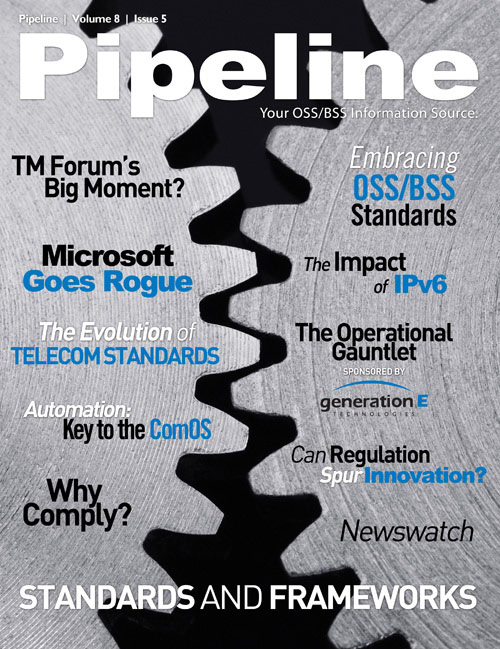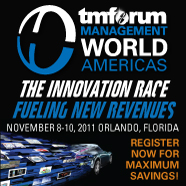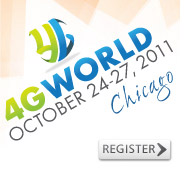By: Tim Young

When it comes to standards specific to the telecom OSS/BSS space, a conversation is rarely complete without some mention of the TM Forum (TMF).
However, beyond its catalyst projects and training sessions, the TMF has, until recently, been somewhat reluctant to step forward and become a true Standards Development Organization (SDO). Now, however, well over two decades after the Forum’s founding, it has begun to make serious inroads into establishing and promoting its own set of standards.
Unlike many other telecom SDOs, the TMF is uniquely focused on the integration and interoperability within the OSS/BSS architecture. It was founded in 1988 by BT and AT&T and has become a significant organization for facilitating interaction between the ISV community and some of the largest communications service providers (CSPs). Its flagship event, Management World, while small compared to major mainstream telecom events, is certainly one of the most focused on the realities of communications IT. However, the continued emergence of new technologies, such as cloud-computing, has put the TMF in a position that to capitalize on how these trends impact CSPs within the OSS/BSS framework. This is an opportunity that is not lost on the TMF.
The organization now sports some 800 members now, almost 30% of which are CSP companies. “I’d say that of the top 100 [largest] service providers, about 60-70 are members.” Martin Creaner, President of TM Forum, told Pipeline. However, beyond its catalyst projects and training sessions, the TM Forum has always been somewhat reluctant to step forward and become a true standards body. Now, however, it is attempting to push further into that direction.

The TMF’s standards are collectively known as Frameworx, though the paint is still a bit wet on the rebranding, as more than a few vendors, service providers, and even distracted Forum staffers still occasionally refer to Frameworx by its old name, NGOSS.
For those of you unfamiliar with Frameworx/NGOSS, a quick overview: Frameworx is composed of four underlying components, each aimed at standardizing information models, interfaces, and lexicon.
The first is the Business Process Framework, otherwise known as the eTOM. This framework is meant to aid in the creation of a comprehensive, multi-layered view of all of the business processes necessary for a carrier’s operation. The framework provides both guidelines and process flows, and aligns with standards from ITIL and other external bodies.
The Information Framework, or SID, meanwhile, is intended to provide a common information model. It’s used to develop databases and provide a glossary of terms for business processes. The framework is intended to reduce integration costs and to reduce project management time and cost by minimizing the number of necessary changes to underlying architecture during the launch of a new product or service offering.
The Application Framework, also known as the TAM, attempts to group the information and processes defined by the eTOM and the SID into recognizable applications. This provides CSPs with a coordinated systems map showing, in a clear and practical way, how business processes are implemented across applications.









